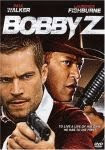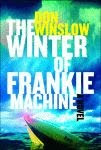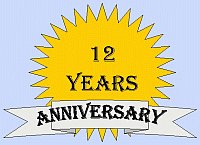Margaret Coel part 1, the non-fiction of a noted mystery author
by Steven Williams
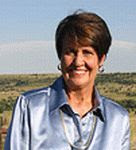 Margaret Coel is a fourth generation native Coloradan noted for her series of mysteries, the Wind River mysteries. She has always been interested in all kinds of history, but particularly the history of the American West. Coel attended Marquette University and initially began her professional writing career writing non-fiction. Much of this early work was magazine articles. The venues they have appeared in include the New York Times, the Christian Science Monitor, American Heritage of Invention and Technology, Creativity! as well as many other periodicals.
Margaret Coel is a fourth generation native Coloradan noted for her series of mysteries, the Wind River mysteries. She has always been interested in all kinds of history, but particularly the history of the American West. Coel attended Marquette University and initially began her professional writing career writing non-fiction. Much of this early work was magazine articles. The venues they have appeared in include the New York Times, the Christian Science Monitor, American Heritage of Invention and Technology, Creativity! as well as many other periodicals.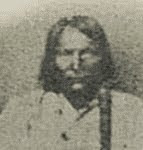 The most notable of her five non-fiction books is Chief Left Hand: Southern Arapaho, a biography of an important Arapaho chief as well as a history of the Arapahos in Colorado and the terrible Sand Creek Massacre. This book's reputation has led to it being placed on the list of 100 best books on Colorado history by the Colorado Historical Society as well as receiving a Best Non-Fiction Book Award from the National Association of Press Women.
The most notable of her five non-fiction books is Chief Left Hand: Southern Arapaho, a biography of an important Arapaho chief as well as a history of the Arapahos in Colorado and the terrible Sand Creek Massacre. This book's reputation has led to it being placed on the list of 100 best books on Colorado history by the Colorado Historical Society as well as receiving a Best Non-Fiction Book Award from the National Association of Press Women.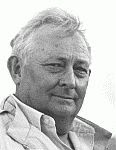 Coel has wanted to be a writer from an early age. Though she started writing non-fiction her intention had always been to eventually write fiction. She decided to write mysteries because she enjoyed reading them and she felt that the old addage "write what you read" made a lot of sense to her. Her family's long history in Colorado and her personal interest in the history of the American west had given her some background to build on but she initially had no clear vision on where to go. It was an inspirational presentation by Tony Hillerman, noted for his Navajo Tribal Police mystery novels, that made her realize that she had the beginnings of her own series about people and the place they lived that she really cared about. Her research for Chief Left Hand had already given her a deep exposure to Arapaho history and culture and she used this local and people for her first novel.
Coel has wanted to be a writer from an early age. Though she started writing non-fiction her intention had always been to eventually write fiction. She decided to write mysteries because she enjoyed reading them and she felt that the old addage "write what you read" made a lot of sense to her. Her family's long history in Colorado and her personal interest in the history of the American west had given her some background to build on but she initially had no clear vision on where to go. It was an inspirational presentation by Tony Hillerman, noted for his Navajo Tribal Police mystery novels, that made her realize that she had the beginnings of her own series about people and the place they lived that she really cared about. Her research for Chief Left Hand had already given her a deep exposure to Arapaho history and culture and she used this local and people for her first novel.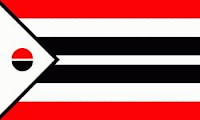 Coel's Arapaho Wind River mysteries take place among the Arapahos on the Wind River Reservation in Wyoming. The main recurring characters are a Jesuit Priest, John O'Malley, originally from Boston and an Arapaho attorney, Vicky Holden. This series has been successful as bestsellers and critically well received. This critical recognition includes the Frank Waters Award, six Colorado Book Awards, and the Willa Cather Award for Best Novel of the West for 'The Spirit Woman'.
Coel's Arapaho Wind River mysteries take place among the Arapahos on the Wind River Reservation in Wyoming. The main recurring characters are a Jesuit Priest, John O'Malley, originally from Boston and an Arapaho attorney, Vicky Holden. This series has been successful as bestsellers and critically well received. This critical recognition includes the Frank Waters Award, six Colorado Book Awards, and the Willa Cather Award for Best Novel of the West for 'The Spirit Woman'. Coel's novels are notable for the ways in which actions in the past, sometimes even the distant past, factor into events in the present. It has also been a very concious decision by her to choose two amateur sleuths who are intimately associated with the Wind River Reservation but who straddle the two worlds of Arapaho and mainstream America. Without this bridge and the internal conflicts and challenges this dichotomy represents for O'Malley and Holden, the complexity of the characters would never be convincing enough to flesh out the social context of the stories. Coel is certainly a believer in the fiction writer's creed of "character, character, character."
Coel's novels are notable for the ways in which actions in the past, sometimes even the distant past, factor into events in the present. It has also been a very concious decision by her to choose two amateur sleuths who are intimately associated with the Wind River Reservation but who straddle the two worlds of Arapaho and mainstream America. Without this bridge and the internal conflicts and challenges this dichotomy represents for O'Malley and Holden, the complexity of the characters would never be convincing enough to flesh out the social context of the stories. Coel is certainly a believer in the fiction writer's creed of "character, character, character."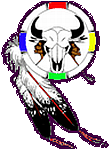 One of the more notable benefits of this approach is that Coel structures her novels around presenting her main characters with murderous events and then following their lead in constructing the plot. The realistic complexity of O'Malley and Holden have transformed them into essentially living people, though Coel is quick to note that neither character is based on a real person. The realism of these characters is supported by a texturally rich realism of the land and social interactions of reservation life. She also takes advantage of recurring characters and allow herself and her readers to watch Father O'Malley and Holden change and grow as they face tough challenges and become stronger because of them.
One of the more notable benefits of this approach is that Coel structures her novels around presenting her main characters with murderous events and then following their lead in constructing the plot. The realistic complexity of O'Malley and Holden have transformed them into essentially living people, though Coel is quick to note that neither character is based on a real person. The realism of these characters is supported by a texturally rich realism of the land and social interactions of reservation life. She also takes advantage of recurring characters and allow herself and her readers to watch Father O'Malley and Holden change and grow as they face tough challenges and become stronger because of them.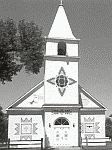 Coel generally spends at least two weeks a year in the Wind River Reservation area in order to keep a very visceral feel for the place. Of course, over the years, because of her work as a writer, she has developed lasting friendships and her visits are an important part of her personal life also. She enjoys being with the Arapaho people, going to their powwows and other celebrations, and driving the roads and visiting the places that she writes about. She always stays at St. Stephen's Mission, the actual mission upon which she bases O'Malley's fictional mission.
Coel generally spends at least two weeks a year in the Wind River Reservation area in order to keep a very visceral feel for the place. Of course, over the years, because of her work as a writer, she has developed lasting friendships and her visits are an important part of her personal life also. She enjoys being with the Arapaho people, going to their powwows and other celebrations, and driving the roads and visiting the places that she writes about. She always stays at St. Stephen's Mission, the actual mission upon which she bases O'Malley's fictional mission.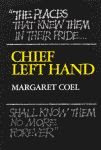 Chief Left Hand, Southern Arapaho (1981)
Chief Left Hand, Southern Arapaho (1981)A biography of Chief Left Hand aka Chief Niwot aka Left Hand the elder (1825-1864). Chief Niwot was noted for his nuanced ability to speak English as well as his realization that the whites were going to be permanent residents in the west. Because of this, he worked for peace with the whites feeling the maintenance was the only way for his people to survive. While well-respected by settlers of good will, he was avoided and excluded by other anglos bent on the extermination and/or expulsion of the Indian. Coel's book, notable for its use careful research and use of primary documentation, tells the story of Left Hand the Southern Arapahos during the years of the Colorado Gold Strike that lead up to the Sand Creek Massacre. Coel presents also presents a strong argument, based on documentary evidence, for the true fate of Chief Left Hand the elder and clarifies the confusion with the later, younger, non-English speaking Chief Left Hand (1840-1911). In her book Coel also traces the careers of Territorial Governor John Evans and Colonel Chivington as well as describing the subsequent Congressional investigation of the Sand Creek Massacre.
 The Colorado Gold Rush aka Pike's Peak Gold Rush began in 1858, while the area was still part of the Kansas Territory, and it led to a series of confrontations and pressure from gold prospectors. The Southern Arapaho people lived along the Colorado Front Range often wintering in Boulder Valley. Their experience of continuing and increasing encroachment by gold hunters onto Arapaho land increased tensions dramatically. By 1864, the situation had degenerated to the point where Territorial Governor Evans decided the Indians in Colorado Territory needed to be eliminated.
The Colorado Gold Rush aka Pike's Peak Gold Rush began in 1858, while the area was still part of the Kansas Territory, and it led to a series of confrontations and pressure from gold prospectors. The Southern Arapaho people lived along the Colorado Front Range often wintering in Boulder Valley. Their experience of continuing and increasing encroachment by gold hunters onto Arapaho land increased tensions dramatically. By 1864, the situation had degenerated to the point where Territorial Governor Evans decided the Indians in Colorado Territory needed to be eliminated.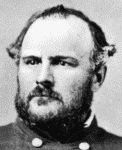 The Arapaho and Cheyenne led by chiefs determined to maintain peace with the anglos were ordered by Governor Evans to relocate to a remote part of eastern Colorado. A Colorado calvary unit lead by Army Colonel Chivington of the Colorado Volunteers, a former minister and close friend of Governor Evans who was appointed by Evans to his command, attacked the peaceful Indians near Sand Creek on November 29, 1864. This event became notorious as the Sand Creek Massacre. Chief Niwot was severly wounded in this attack and died a few days later. The Massacre was widely recognized at the time as an atrocity so awful that President Abraham Lincoln called a Congressional investigaiton that resulted in the removal of Govenor Evans from office, the placing of Colorado Territory under martial law, and the censuring of Colonel Chivington. The Sand Creek Massacre is also considered to be the event that precipitated the preceeding thirty years of Indian Wars in the West.
The Arapaho and Cheyenne led by chiefs determined to maintain peace with the anglos were ordered by Governor Evans to relocate to a remote part of eastern Colorado. A Colorado calvary unit lead by Army Colonel Chivington of the Colorado Volunteers, a former minister and close friend of Governor Evans who was appointed by Evans to his command, attacked the peaceful Indians near Sand Creek on November 29, 1864. This event became notorious as the Sand Creek Massacre. Chief Niwot was severly wounded in this attack and died a few days later. The Massacre was widely recognized at the time as an atrocity so awful that President Abraham Lincoln called a Congressional investigaiton that resulted in the removal of Govenor Evans from office, the placing of Colorado Territory under martial law, and the censuring of Colonel Chivington. The Sand Creek Massacre is also considered to be the event that precipitated the preceeding thirty years of Indian Wars in the West.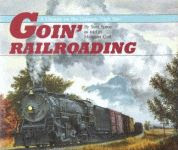 Goin' Railroading: A Century on the Colorado High Iron (1985)
Goin' Railroading: A Century on the Colorado High Iron (1985)by Margaret Coel as told by Sam Speas, Jr.
The trade paperback edition was published with the sub-title Two Generations of Colorado Stories. Sam Speas, Sr. came to Colorado from Missouri in 1883 attracted to the romantic life of the railroad engineer. This book, based on the recollections of his son contains the story of the father as well as the son's experiences and those of four other members of the Speas family while working on Colorado railroads beginning with the period of open cabbed narrow-gauge engines, primarily in relation to the Colorado and Southern Railway. The stories in this book tell of the The timeline of these stories ranges from the the 'golden era' of narrow-gauge railroading in South Park on into the final days of locomotive steam power on the Front Range and beginning of the transition to diesel powered engines. These are stories of long hours, backbreaking labor, bitter temperatures, faulty brakes and unbelievable hazards that tested the determination and skills of railway engineers as no other region in the United States did. This book tells about a significant and unique component of early Colorado history.
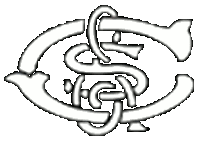 The Colorado and Southern Railway included significant narrow-gauge routes build for the restricted widths and difficult transportation requirements of the Colorado mountains. The Colorado and Southern Railway (reporting marks C&S and CS) operated independently from 1898 to 1908, as part of the Chicago, Burlington and Quincy Railroad from 1908 to 1981 when it was finally absorbed into the Burlington Northern Railroad. Narrow-gauge railroads are defined as any railroad whose tracks are less than the standard gauge with most narrow-gauge railroads being about 3 feet 6 inches or less. Narrower-gauge railroads are signinficantly cheaper to build and operate and the rolling stock is also cheaper to purchase. Almost all narrow gauge railways have been constructed in association with specific industries. These uses have included and continue to include mining, logging, construction, tunnelling, quarrying and the movement of agricultural products. Most of the narrow-gauge routes in Colorado were abandonded or torn out by the late 1930s.
The Colorado and Southern Railway included significant narrow-gauge routes build for the restricted widths and difficult transportation requirements of the Colorado mountains. The Colorado and Southern Railway (reporting marks C&S and CS) operated independently from 1898 to 1908, as part of the Chicago, Burlington and Quincy Railroad from 1908 to 1981 when it was finally absorbed into the Burlington Northern Railroad. Narrow-gauge railroads are defined as any railroad whose tracks are less than the standard gauge with most narrow-gauge railroads being about 3 feet 6 inches or less. Narrower-gauge railroads are signinficantly cheaper to build and operate and the rolling stock is also cheaper to purchase. Almost all narrow gauge railways have been constructed in association with specific industries. These uses have included and continue to include mining, logging, construction, tunnelling, quarrying and the movement of agricultural products. Most of the narrow-gauge routes in Colorado were abandonded or torn out by the late 1930s. Under the Golden Dome: Colorado's State Capitol (July, 1985)
Under the Golden Dome: Colorado's State Capitol (July, 1985)co-authored with Gladys Doty and Karen Gilleland
This book covers the high points of the history of Colorado's capitol as well as much trivia about the building itself and it is one of two titles written by Margaret Coel as part of the Discovering Historic Colorado series. The series is modeled after the 22 booklets on Colorado regional history written and published by Caroline Bancroft (1900-1985), commonly known as the Bancroft series. The subject of this book was chosen because there existed no guide to the Colorado capitol at that time. Even though this book was researched, written and published in only two months, the authors placed a special emphasis on producing a guide that was well written and interesting to read. It is also well-illustrated with black and white photographs throughout.
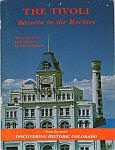 The Tivoli: Bavaria in the Rockies (September, 1985)
The Tivoli: Bavaria in the Rockies (September, 1985)co-authored with Jane Barker and Karen Gilleland
This is a one of two titles written by Margaret Coel as part of the Discovering Historic Colorado series. This book is about the Tivoli building and the Tivoli Brewery in Denver, Colorado and its central in the ethnic German community of early Denver. The Tivoli building refers directly to the seven-story mansard roofed tower building that was built in 1890 based on a design by Frederick C. Eberley, one of Denver's most noted architects. It was constructed in Denver's oldest neighborhood, Auraria. This title is the second in the series by Coel written as part of the Discovering Historic Colorado series. Like the first title, it is modeled after the Bancroft series of booklets on Colorado regional history. This title is especially significant in that it was produced at just about the same time that the Tivoli Brewery reopened as a shopping and entertainment complex. 'The Tivoli' is also notable for being a well-written and interesting guide book and it is similarly well-illustrated with black and white photographs throughout.
 A New Westminster: 1977-1986 (1987)
A New Westminster: 1977-1986 (1987)This book was written in part as a celebration of the 75th anniversary of the founding of the village of Westminster in what eventually became the Denver metropolitan area. Westminster was initially just a village but beginning in the 1950s the population grew dramatically as developers began building ranch house subdivisions in the area. In 1958 Westminster became a Colorado home-rule city in an effort to deal with this growth spurt. In 1976, Westminster finally became a full-service city with water service, wastewater treatment, neighborhood parks and recreation programs, and modern police and fire departments. In the 1970s Westminster had been experiencing the highest growth rate in the Denver metropolitan area. Margaret Coel's book tells the story of Westminster from 1977 to 1986, a critical period when the town successfully met the tought challenges of rapid growth and stabilized as a successful component town in the Denver metropolitan area.
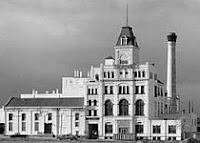 About the Tivoli Brewery
About the Tivoli BreweryThe Tivoli was actually part of a complex of buildings begun in 1870 that made up a brewery that would operate under various names and which had been founded by Mortiz Sigi in 1866, originally in a nearby but different location in Denver. In that same year, Sigi's brewery became the meeting place for a German gymnastics society, the Turnverein. Germans were the single largest foreign-born group in the city of Denver before World War I.
 In 1875 after Sigi's death, Max Melsheimer, bought Sigi's brewery buildings and named the new business the Milwaukee Brewery. In 1882, Melsheimer built the Vorkwaert’s Turnhalle (aka West Denver Turnhalle aka Turnhalle Opera House aka Turn Halle Opera House) on part of the sight. The building was designed by another prominent Denver architect, Harold W. Baerresen. The Vorkwaert was build as a German opera house and was very popular with the local community. The building was incorporated into the Melsheimer's overall brewery complex of buildings with the completion of the Tivoli building in 1890.
In 1875 after Sigi's death, Max Melsheimer, bought Sigi's brewery buildings and named the new business the Milwaukee Brewery. In 1882, Melsheimer built the Vorkwaert’s Turnhalle (aka West Denver Turnhalle aka Turnhalle Opera House aka Turn Halle Opera House) on part of the sight. The building was designed by another prominent Denver architect, Harold W. Baerresen. The Vorkwaert was build as a German opera house and was very popular with the local community. The building was incorporated into the Melsheimer's overall brewery complex of buildings with the completion of the Tivoli building in 1890.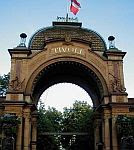 In 1900 John Good, a one-time owner of the Rocky Mountain Brewery, foreclosed on his loan to Melsheimer after Melshimer had suffered various personal and economic mishaps and became unable to pay either the principal or the interest on the loan. Good renamed the brewery the Tivoli Brewing Company, naming it after the Tivoli Gardens in Copenhagen, a well-known and very popular public amusement park and gardens.
In 1900 John Good, a one-time owner of the Rocky Mountain Brewery, foreclosed on his loan to Melsheimer after Melshimer had suffered various personal and economic mishaps and became unable to pay either the principal or the interest on the loan. Good renamed the brewery the Tivoli Brewing Company, naming it after the Tivoli Gardens in Copenhagen, a well-known and very popular public amusement park and gardens.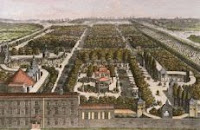 Originally called the Tivoli and Vauxhall when it was opened in 1843, the Tivoli Gardens aka Tivoli in Copenhagen had acquired its name as allusion to the well known and highly popular public gardens, the Jardin de Tivoli in Paris (closed about 1825) and Voxhall Gardens in London (closed about 1859). The Jardin de Tivoli had itself been named after the gardens of the Villa d'Este in Tivoli near Rome, a popular 18th and 19th century resort spa area. The Tivoli in Copenhagen is one the oldest two amusement parks in the world that have survived intact.
Originally called the Tivoli and Vauxhall when it was opened in 1843, the Tivoli Gardens aka Tivoli in Copenhagen had acquired its name as allusion to the well known and highly popular public gardens, the Jardin de Tivoli in Paris (closed about 1825) and Voxhall Gardens in London (closed about 1859). The Jardin de Tivoli had itself been named after the gardens of the Villa d'Este in Tivoli near Rome, a popular 18th and 19th century resort spa area. The Tivoli in Copenhagen is one the oldest two amusement parks in the world that have survived intact.
Resources
Margaret Coel's author website
Tony Hillerman
Tony Hillerman at Fantastic Fiction
Tony Hillerman obituary
Chief Niwot (1825-1864) aka Left Hand the elder
The Arapaho at Wikipedia
Pike's Peak Gold Rush
Description of the 1859 Collier and Cleveland lithograph
Library of Congress Prints and Photographs Division lithograph source
Sand Creek massacre
John Evans
John Milton Chivington
Colorado and Southern Railway
Como and the CS Como Roundhouse
History of the Tivoli Brewery history
The Auraria section of Denver
History of the Tivoli Brewery
Tivoli-Union Brewery late 1970s photos
Tivoli Gardens Copenhagen
Tivoli Gardens Copehnagen photo gallery
Tivoli Gardens Copenhagen 1843 images
Vauxhall Gardens
Vauxhall Gardens 1661-1859, A Brief History
Villa d'Este, Tivoli, Italy
Tivoli, Italy
Home
Older Article: Don Winslow, Gripping Thrillers and Good Writing







